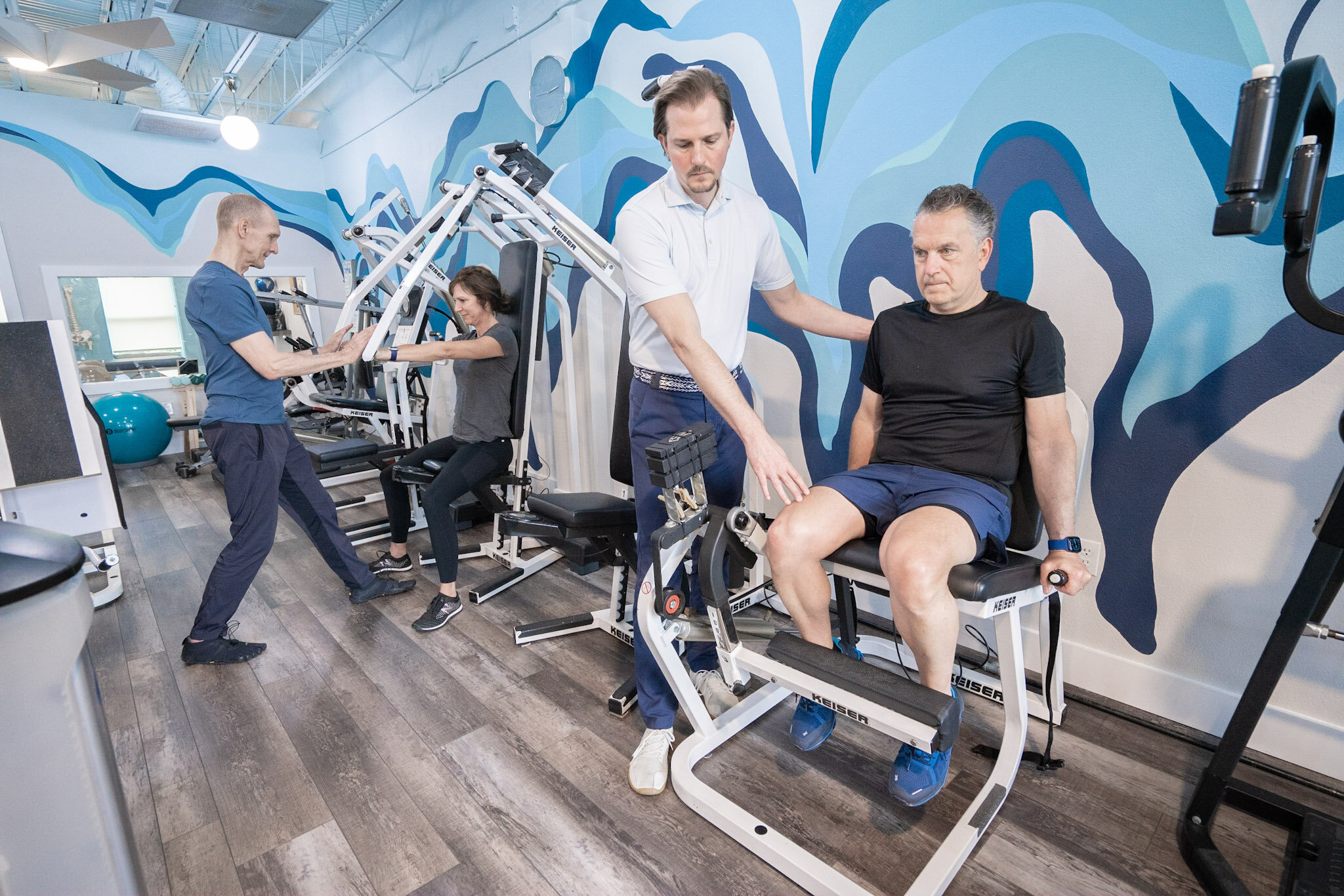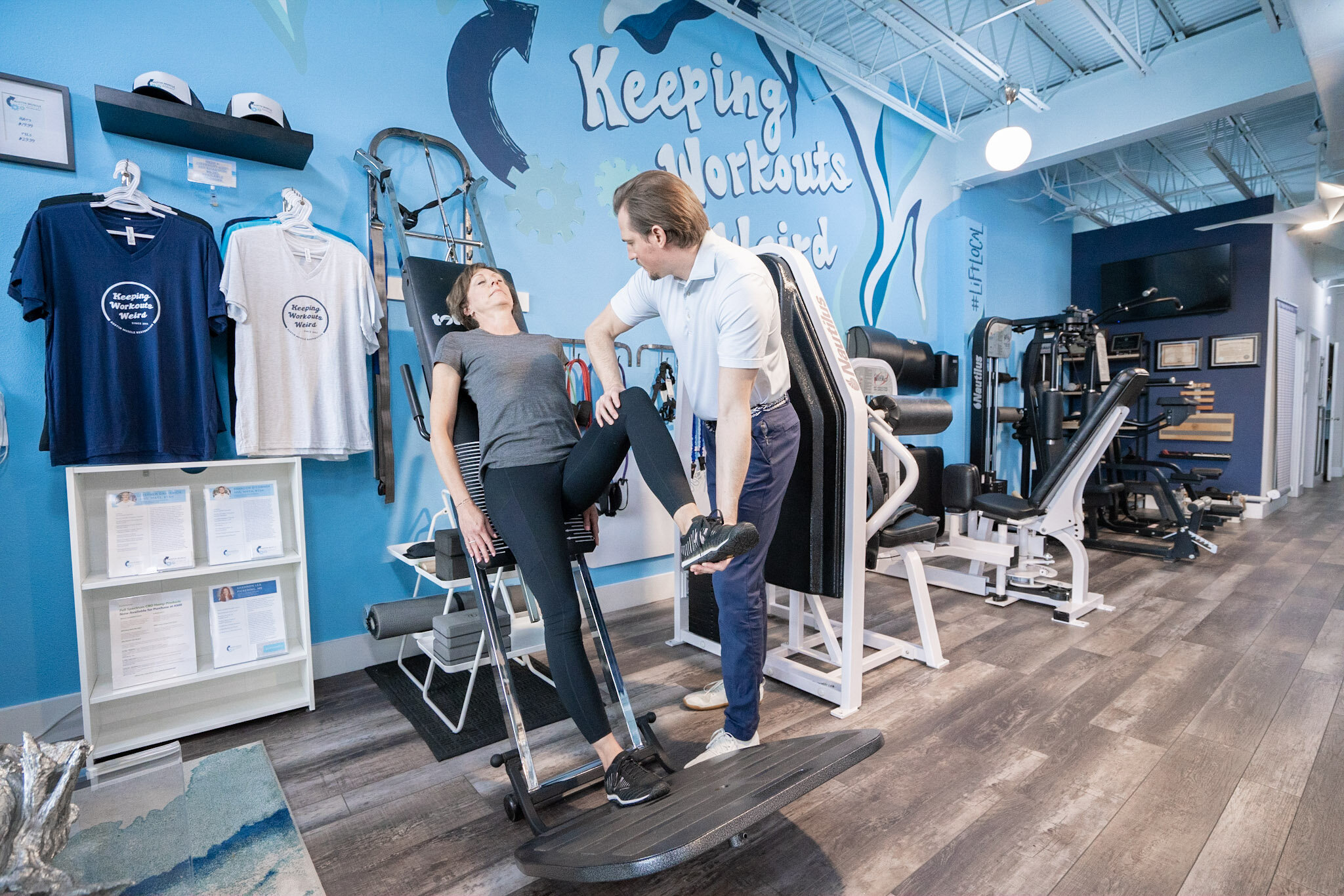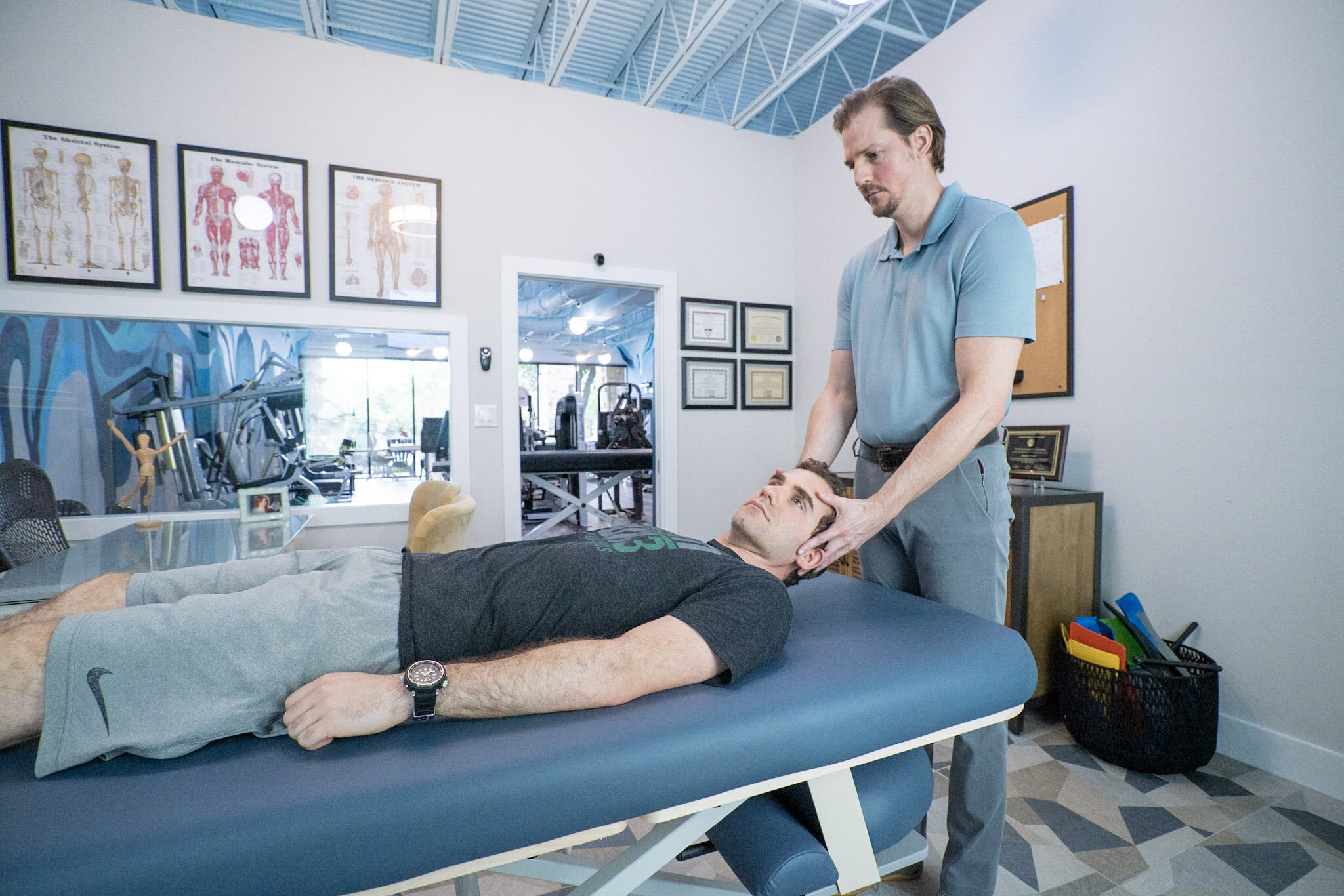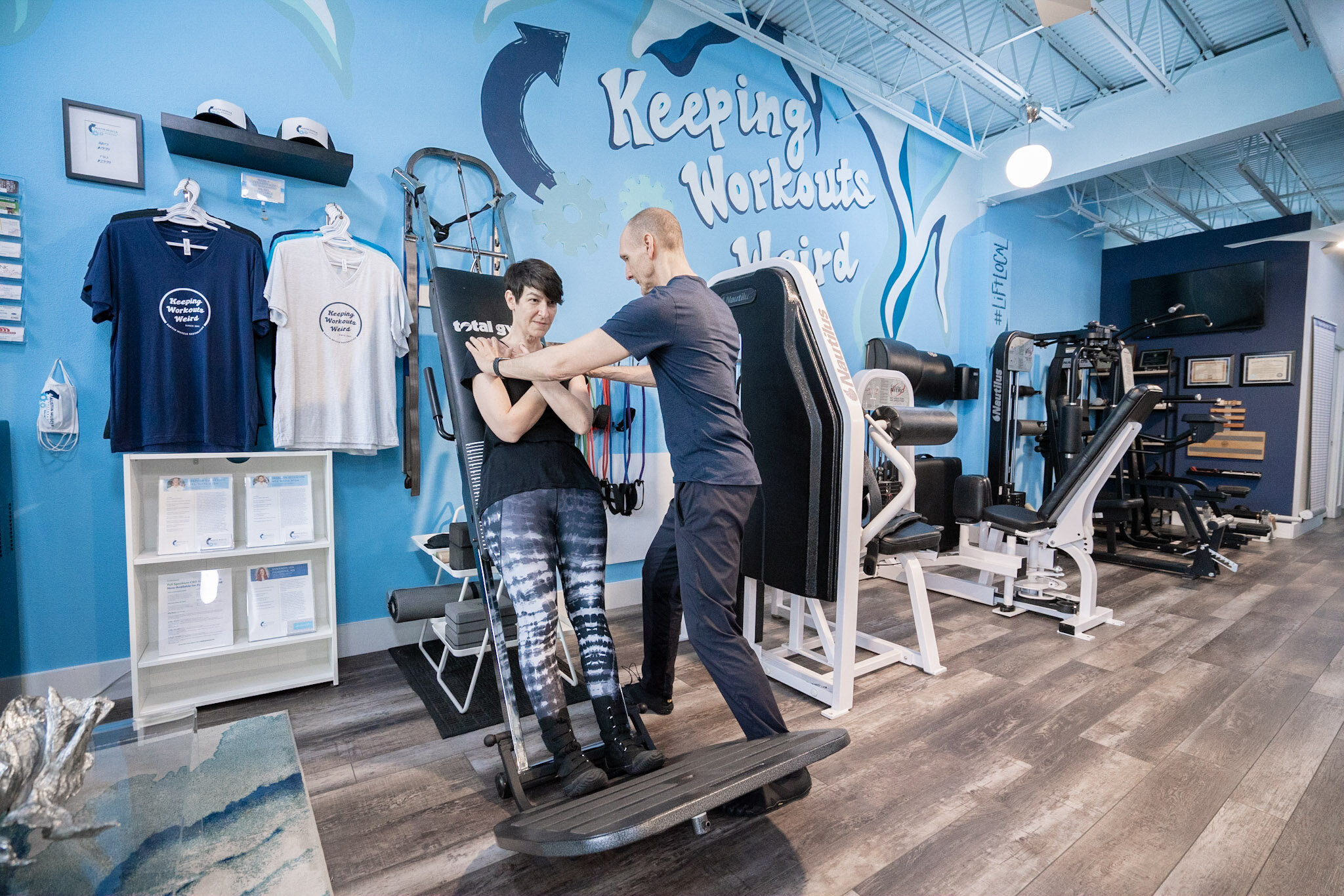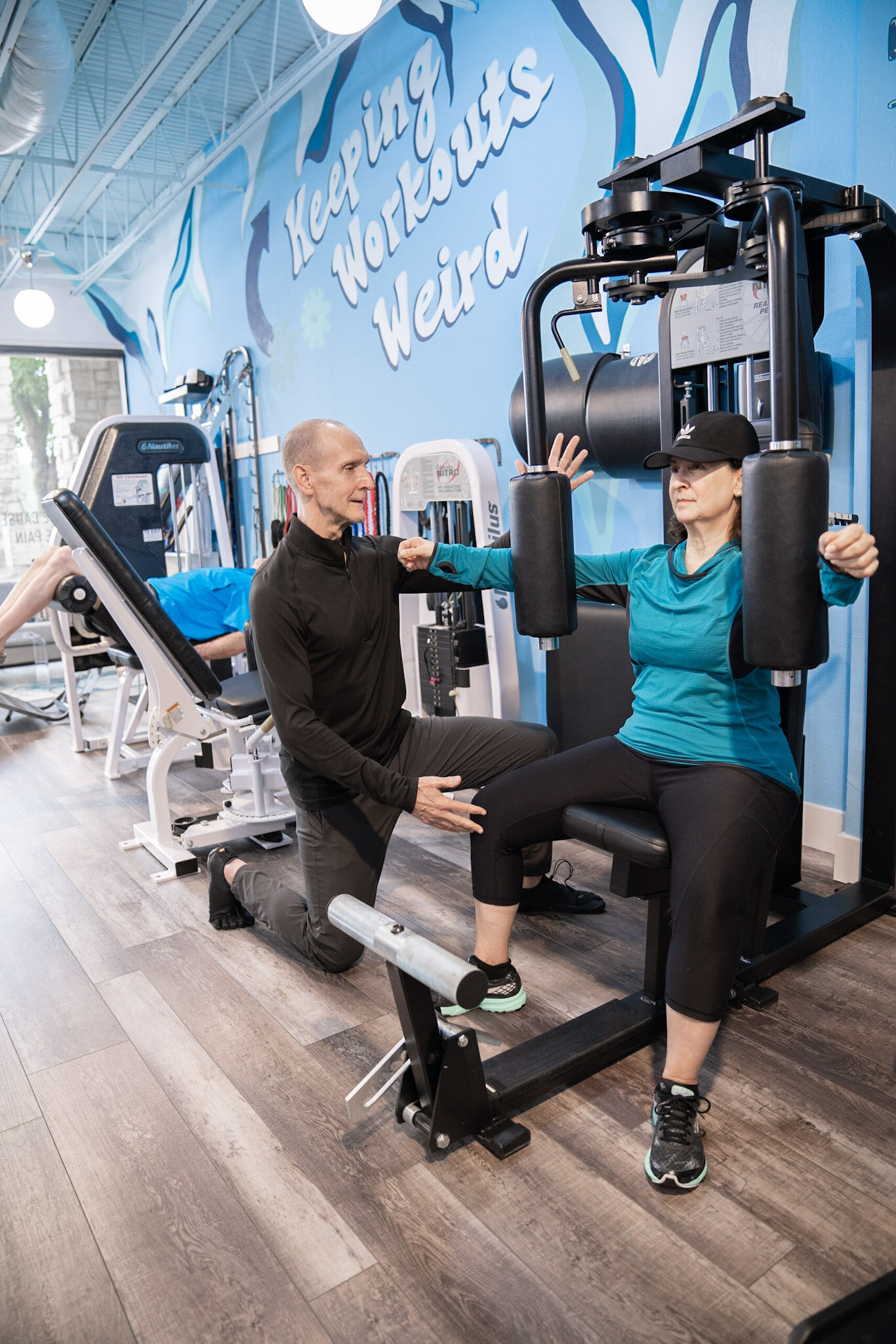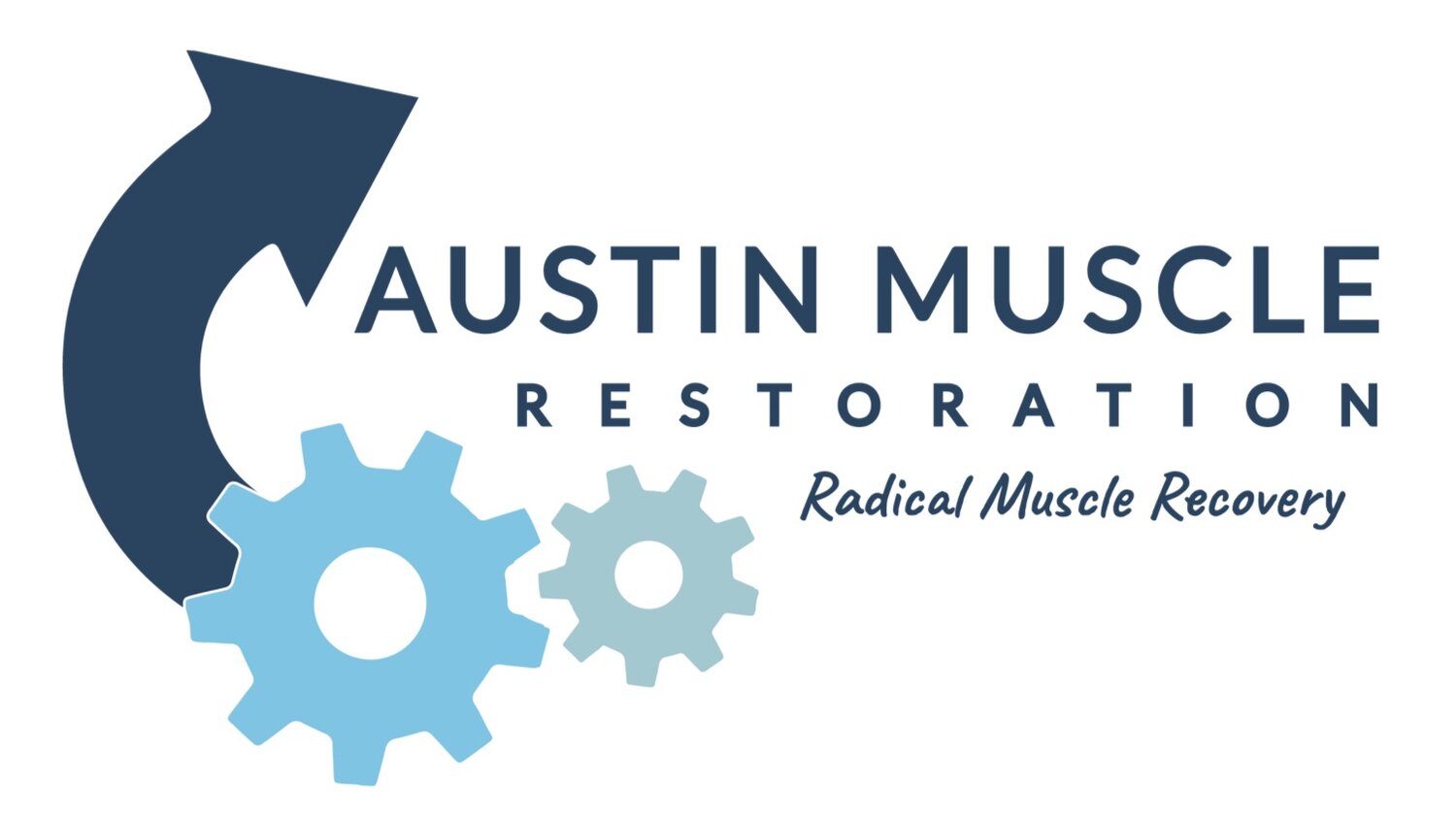
faq
IS YOUR MUSCLE RESTORATION SYSTEM© INVASIVE? IS IT PAINFUL?
Our MRS is neither invasive nor typically painful. In fact our goal is that you don't have discomfort during sessions and that you never feel worse after sessions. Of course, some clients have high levels of inflammation or existing pain so on occasion, a session could feel painful or you could experience soreness or pain post session.
WHY AUSTIN MUSCLE RESTORATION?
We are a unique facility that focuses on total muscular health restoration. We are often the "last stop" in helping clients with pain or movement limitations, no matter how complicated the case. We achieve results because our practitioners use our unique Muscle Restoration System© (MRS) which was developed from our practitioners' combined 40 year experience and certifications in multiple sciences over 15 years.
HOW IS YOUR MRS© WORK DIFFERENT FROM OTHER TYPES OF THERAPIES?
Our MRS© is not a therapy. It's the first step in the progression of the exercise process. It is different from most other muscle based modalities because it does not focus exclusively on the muscles and joints where your symptoms are occurring. We use use a systematic total body range of motion assessment and specific muscle testing to determine if the problem is exclusive to the muscles and joints in the symptomatic area or if the symptoms have a different root cause elsewhere in the body. Click here to read more.
WILL YOUR MRS© MAKE MY MUSCLES STRONGER?
The answer is a resounding YES! Our MRS© can provide instantaneous improvements in muscle contraction and muscle strength. Improved muscle contraction and strength create better performance in all areas of life from daily tasks, to workouts, to sports performance.
CAN THE MRS© PROCESS IMPROVE JOINT AND MUSCLE INFLAMMATORY CONDITIONS?
All joint movement is controlled and stabilized by muscles. If those muscles lose the ability to contract at optimal levels the integrity of the joint is potentially compromised. By restoring the muscles back to optimal levels of strength and contraction, the integrity and the health of the joint has the opportunity to improve and muscle inflammation has a chance to subside.
HOW DID MY MUSCLES END UP GETTING WEAK IN THE FIRST PLACE?
All types of stress, trauma (both acute and chronic), mental and physical health conditions, muscle overuse can lead to muscle weaknesses over time. Overuse occurs in all our daily lives. Examples of overuse can be as simple as sitting for long periods of time, participating in regular exercise, or as the result of a recent or past injury. If someone has only a small amount of muscle weakness they may not notice it at all. But if someone has a significant amount of muscle weakness the symptoms may range from feeling fatigued, to feeling very tight all over the body, to experiencing chronic joint or muscle pain.
HOW DO YOU DETERMINE WHAT MUSCLES ARE WEAK?
Muscle weakness is determined by performing a very specific joint range of motion exam and by utilizing specific muscle testing. The joint range of motion exam provides the indication of which muscles may be in a weakened state. When muscles become weak they have a tendency to become very tight. This is a built in protective mechanism of the body. When the body senses that a muscle cannot contract optimally it will increase muscle tension in order to protect the integrity of the joint the muscle is controlling. Therefore lack of motion in one joint compared to the same joint on the other side of the body becomes an indicator of potentially weak muscles. The muscle weakness is then confirmed by performing a muscle specific test in which the client resists the practitioners force in a specific position.
IF YOU FIND A WEAK MUSCLE HOW IS THE MUSCLE POTENTIATED?
Every muscle has a connection to the central nervous system that sends electrical information back and forth. Due to the aforementioned stress, trauma, and overuse, sometimes that electrical information becomes altered and is not flowing as well as it could leading to a loss of optimal muscle contraction. By performing a gentle cross friction pressure at the muscle’s attachment site or by performing a low intensity isometric contraction, the electrical impulse from the muscle to the central nervous system can be restored and the muscle will begin contract at an optimal level.
HOW LONG IS THE MRS© PROCESS?
It is hard to predict without an initial evaluation how long your muscle restoration process will be. Many factors matter, such as age of the client, health of the muscular system, number of compensation patterns, injury history, current state of stress, and how acute or chronic issue are. In most cases, meaningful results are achieved in 8-12 sessions. For complicated cases, such as with autoimmunity or significant traumatic injury, it may take a year or more to achieve complete muscle restoration.
HOW OFTEN DO I NEED TO HAVE MRS© SESSIONS?
Typically, most clients come in once per week for sessions. However, it is critical to know that our sessions are cumulative. Therefore, total number of sessions is more important than how often you schedule. So, if you ultimately need a total of 20 sessions, you can come in once a week for 20 weeks, you can come in twice a week for 10 weeks, or you can come in once a day (five days a week) for 4 weeks. You will achieve the same outcome, the only difference is how fast you achieve that outcome. Your total time and financial investment will be the same. So how often you come in will be dependent on your preference.
WHAT IF I DON'T LIVE IN AUSTIN?
We do serve clients who live out of town. Please contact Shannon to discuss. Regardless of whether you are in driving distance or you are coming from far away, we can offer custom session plans for you.
Have a question? Want to know more? VISIT OUR YOUTUBE CHANNEL.
Ready to schedule an evaluation?
